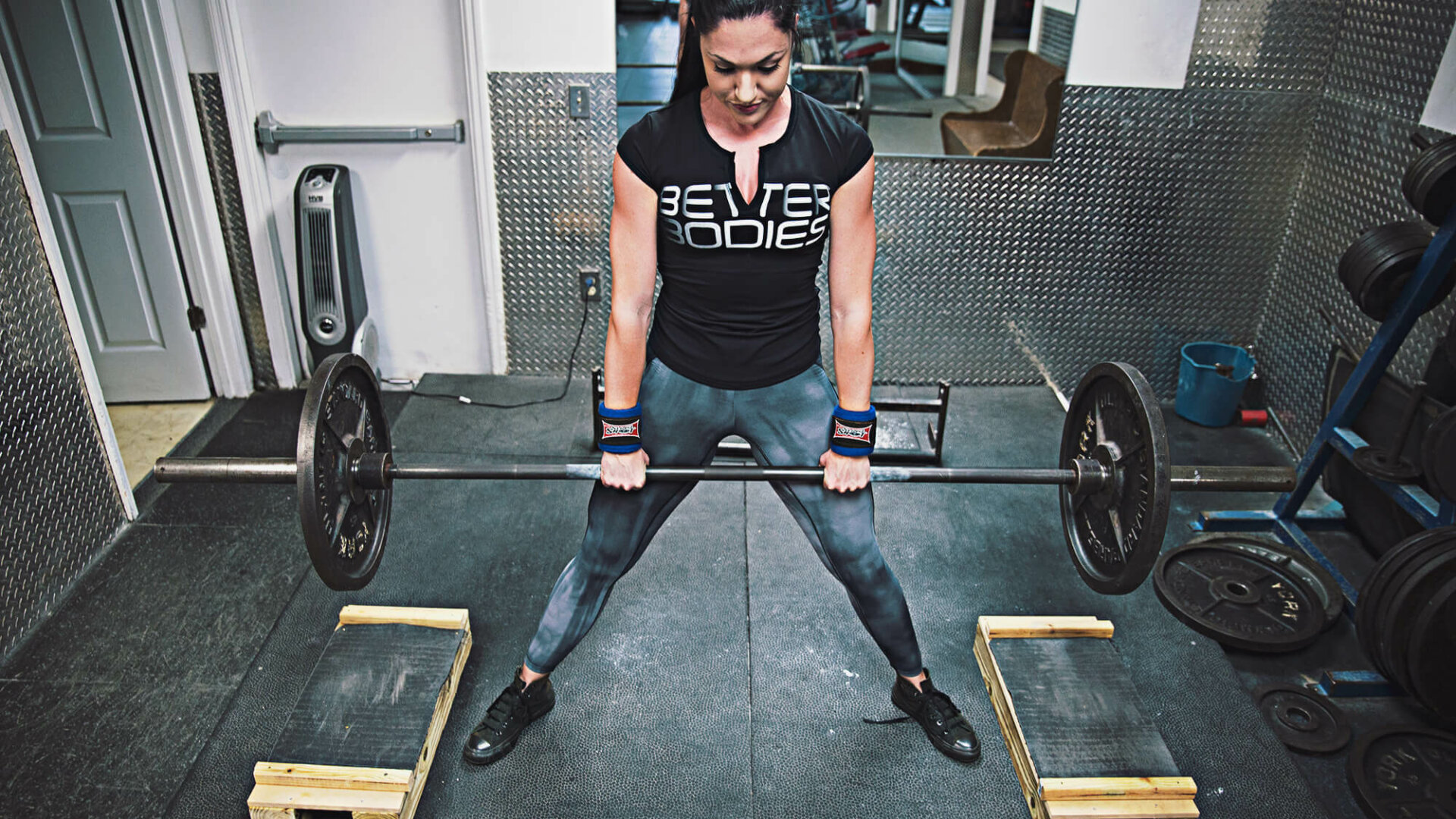New Research from the University of South Florida on High vs. Low Protein in Aspiring Female Physique Athletes!
In this article I will be summarizing ‘hot off the press’ research that was conducted in my research laboratory (the Performance & Physique Enhancement Laboratory at the University of South Florida). The title of this study is “Effects of a High (1.1 grams/pound) vs. Low/Moderate (0.55 grams/pound) Protein Intake on Body Composition in Aspiring Female Physique Athletes Engaging in an 8-Week Resistance Training Program.“ As members of BioLayne’s website, you are getting unprecedented access to this information from the research teams’ perspective. You are receiving this sensitive information prior to the principal investigator sharing the results with those in the media and fitness industry. As a side note, academic journals do not allow researchers to discuss their research findings until the data has been presented at an academic conference, and this study has now passed this test by being presented at the International Society of Sport Nutrition Annual Conference in Clearwater, Florida on Saturday, June 11th. In a few weeks, you will also see a similar article on this research study on bodybuilding.com.
In the past few years, there has been a renewed interest in comparing high protein diets to lower protein diets in resistance trained individuals. Dr. Jose Antonio from Nova Southeastern University has conducted two of the most recent studies [1][2]. In the first study, resistance trained males and females were instructed to ingest normal (0.8 grams/pound) or high (2 grams/pound) levels of protein each day over an 8-week period. The high protein group ingested so much protein that the authors of the study stated “This is the highest recorded intake of dietary protein in the scientific literature that we are aware of” [1]. During the study, both groups were instructed to maintain their normal training programs (the training programs were not standardized nor were the workouts supervised by the researchers in this study). At the end of the 8-week study, it was reported that there were no differences between the high and low protein groups in relation to body weight, fat mass, fat free mass, or body fat levels. While it may be surprising to some that the higher protein group did not gain fat free mass to a greater extent than the low protein group, to me, the truly amazing finding from this study was the fact that there were no differences between the two groups in relation to body weight, fat mass, and body fat %. This occurred in spite of the fact that the high protein group consumed over 750 calories more per day for 8 weeks! In terms of protein grams, they consumed an extra 145 grams of protein per day (an average intake of 307 grams per day for the high protein group and 138 grams per day in the low protein group).
In a similar follow-up study conducted one year later [2], Antonio and colleagues randomly assigned resistance trained males and females to ingest protein at 1 gram/pound of body weight (normal protein group) or at 1.5 grams of protein/pound of body weight (high protein group). Other than the different amounts of protein ingested in this study, the main difference between this study and the one summarized above was that the participants in this study were given a periodized resistance-training program to follow for an 8-week period (however, similar to the previous study, the workouts were not supervised by the investigators). At the end of the study, there were no differences between the two groups for fat free mass, but there were significant differences for fat mass and body fat %, with the high protein group losing significantly more fat mass (1.6 vs. 0.67 pounds) and body fat % (2.4% vs. 0.6%) as compared to the lower protein intake group. Similar to the previous study, the higher protein group consumed significantly more calories (~500 calories more) and daily protein (+88 grams) as compared to the lower protein intake group. This finding goes against what most people’s prediction would be for this type of intervention. Fair-minded individuals would logically predict that the group that eats more calories (500 more calories in this example) for an extended period of time would gain more body fat. In reality – the opposite occurred! The group that ingested more calories (all in the form of protein as carbohydrate and fat intakes were not different between the groups) improved their body composition.
Taking these findings into consideration, in late summer of 2015 Laurin Conlin, Dr. Norton, and myself met to develop the methodology for a similar study in females only. The population that we decided to recruit was aspiring female physique athletes – females that have never competed before but had a desire to do so within the next year. Similar to the Antonio studies [1][2], our study provided half of the females with a higher protein diet (1.1 grams/pound body weight) and the other half with a lower protein diet (0.55 grams/pound body weight). For a 130-pound female in the low protein group, this meant that she could not consume more than 72 grams of protein per day, and if this same female were randomly assigned to the higher protein group it meant that she could not consume less than 143 grams of protein per day.
One of the main differences between this study and the Antonio investigations were that every single resistance-training workout was supervised by the research staff in the Performance & Physique Enhancement Laboratory. This was a considerable improvement upon the previous studies as this is the ‘gold standard’ for conducting resistance-training studies (this methodology ensures that the subjects are actually doing the workouts and that they are doing the exercises correctly). In addition, all of the workouts were primarily created by IFBB Bikini Pro Laurin Conlin and were designed to improve strength and body composition. The workouts followed a daily undulating periodization model. At the end of the 8-week study, we found that there were no differences between the high protein group and the low protein group with respect to body weight, fat mass, and body fat %. This is where it gets interesting, the higher protein group gained significantly more fat-free mass (4.6 pounds) as compared to the lower protein group (1.5 pounds). Table 1 below summarizes all of the body composition variables assessed in the study.
| Low Protein Group | High Protein Group | |
|---|---|---|
| Body Weight Change | -0.4 pounds | +2.2 pounds |
| Fat Free Mass Change | +1.3 pounds | +4.6 pounds |
| Fat Mass Change | -1.7 pounds | -2.4 pounds |
| Body Fat % Change | -1.1% | -2% |
In terms of nutrient intake, the high protein group ingested an average of 423 extra calories per day. This was significantly more calories ingested per day (1,839 kcals) as compared to the low protein group (1,416 kcals). In addition, the high protein group ingested an average of 157 grams of protein per day as compared to only 56 grams for the low protein group. There were no significant differences between the groups in terms of their carbohydrate or fat intakes.
What can we take away from our study? It appears that aspiring female physique athletes should ingest approximately 1.15 grams of protein/pound of body mass (2.5 grams/kg body mass) if their goal is to increase fat free mass in a non-dieting phase of training (equivalent to a physique athlete’s off-season).
If we take all three of the summarized studies together [1][2][3] we can start to see a consistent theme. In each study, when participants ingest significantly more calories per day in conjunction with a resistance-training program, as long as those additional calories are provided in the form of protein, body fat gains were not experienced. In fact, in one of the investigations [2] fat mass was significantly decreased when extra calories were provided in the form of protein. This trend is so intriguing, I want to state it again for emphasis. Despite the fact that total caloric intake was significantly greater by ~750 kcals [1], ~500 kcals [2], and ~425 kcals [3] per day in conjunction with an 8-week resistance training program, there was no adverse body composition changes. In two of the three studies there were significant improvements to body composition, with one study reporting significant losses of fat mass [2] and our study observing significant increases in fat free mass [3]. These studies demonstrate the importance of ingesting high quality protein while engaging in a resistance-training program. Could the statement also be made that when engaging in a resistance-training program, one cannot ‘overeat’ with protein?
Dr. Bill Campbell ISSN Data Blitz
References
- Antonio J, Peacock CA, Ellerbroek A, Fromhoff B, Silver T. The effects of consuming a high protein diet (4.4 g/kg/d) on body composition in resistance-trained individuals. J Int Soc Sports Nutr. 2014 May 12;11:19.
- Antonio J, Ellerbroek A, Silver T, Orris S, Scheiner M, Gonzalez A, Peacock CA. A high protein diet (3.4 g/kg/d) combined with a heavy resistance training program improves body composition in healthy trained men and women–a follow-up investigation. J Int Soc Sports Nutr. 2015 Oct 20;12:39.
- Campbell B, Aguilar D, Vargas A, Conlin L, Sanders A, Fink-Irizarry P, Norton L, et al. Effects of a high (2.4 g/kg) vs. low/moderate (1.2 g/kg) protein intake on body composition in aspiring female physique athletes engaging in an 8-week resistance-training program. Abstract presented at the 2016 International Society of Sports Nutrition Annual Conference, Clearwater, FL.

